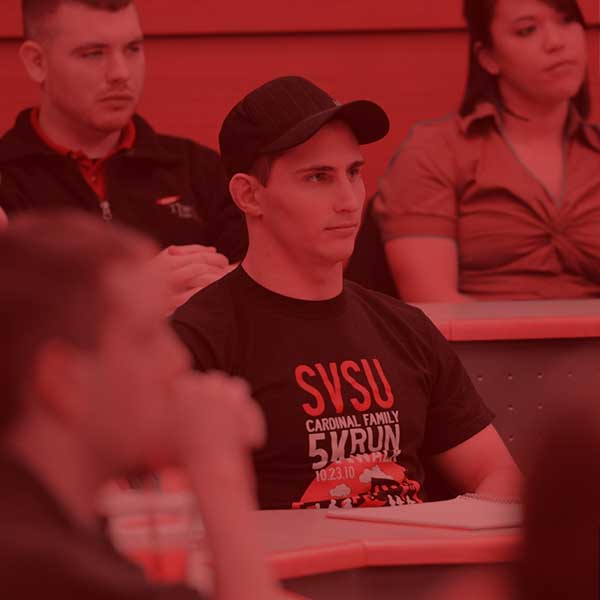Considering a career where you’ll guide others’ health through a mix of science and exercise? Students entering SVSU with this outlook are advised to declare their major as pre-exercise science. After satisfactorily completing two introductory kinesiology courses, you’ll fill out a program application.
We value our students’ growth and progress and seek to empower them in the working world. Reflecting this, the curriculum for the Bachelor’s in Exercise Science follows guidelines for information, breadth, and hands-on learning specified by the American College of Sports Medicine (ACSM) and the National Strength and Conditioning Association (NSCA).
In turn, BS in Exercise Science students acquire a strong foundation in chemistry, biology, and physics. Field-based assignments supplement classroom instruction. Collaborate and learn from a variety of populations and environments while applying exercise testing, exercise prescription, programming, and nutrition principles and using the latest technologies.
We want you to feel prepared for the rigors of the program and recommend all pre-exercise science majors dedicate part of their prerequisite courses to statistics, psychology, critical writing, and physics. Building upon this foundation, the program’s required courses (52 credits) and electives (9 credits) highlight the field’s scientific, research, business, and psychological sides, and you’ll further hone your skills in a 240-hour internship assignment. Based on where you envision your future career, consider pursuing an assignment at a health club, community or corporate fitness program, medical, or clinical site.
Once enrolled, expect an engaging curriculum designed to challenge you and stir excitement every time you’re in the classroom, a simulated environment, or out in the field. Setting the stage for your career, you’ll start by learning the sciences behind movement, including experimental biology, physiology, and anatomy, before you acquire skills in:
- first aid;
- recognizing, managing, and preventing sports injuries;
- kinesiology and functional anatomy;
- teaching and assessing physical fitness;
- prescribing exercise-based treatment plans;
- administering fitness programs and overseeing facilities;
- nutrition in relation to physical activity;
- motor learning and development; and
- adapting exercise programs to acute and chronic conditions.
Review the degree program’s structure and all course descriptions.
To earn a minimum of 124 credits, you’ll complete a minor in addition to coursework for the exercise science major, Basic Skills component, and General Education requirements.







